Our legacy
100 YEARS
A Visual Memoir of RCA
Radio Corporation of America
RCA (Radio Corporation of America) is an iconic brand that has endured from generation-to-generation. Its timeless logo and technological advances have permeated worldwide culture as a symbol of quality and reliability.
Let us take you on the journey from RCA's beginning through its technological advancements over the past 100 years.
Scroll down to see all the history, as we will take you on a journey of innovation.
1919
An icon is born
RCA originated as a reorganization of the Marconi Wireless Telegraph Company of America (commonly called "American Marconi"). American Marconi was involved in high-powered alternators for transatlantic transmissions and the American Navy, and in the interest of national security, wanted an all-American company to own the assets.
In 1919, two naval officers, Admiral H. G. Bullard and Commander S. C. Hooper, met with General Electric's president, Owen D. Young, and proposed that GE purchase American Marconi and use the assets to form its own radio communications subsidiary. Young consented to this proposal, which, effective November 20, 1919, transformed American Marconi into the Radio Corporation of America.

1926
RCA and NBC
In 1926, AT&T decided to exit radio broadcasting and sold its two radio stations and its network operations to RCA for $1 million dollars (approximately $13,772,000 today when adjusted for inflation). These assets formed the business foundation of the National Broadcasting Company (NBC) with ownership split evenly between RCA and General Electric.
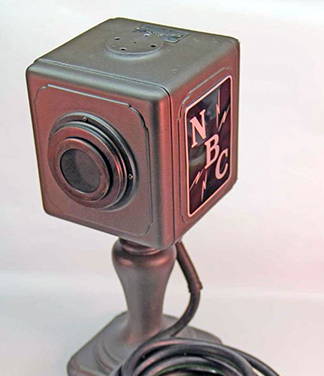
1929
Nipper: His Master’s Voice
RCA purchased the Victor Talking Machine Company, then the world's largest manufacturer of both records and phonographs, including its popular showcase "Victrola" line. This acquisition was organized as a new subsidiary called RCA Victor.
With this purchase, RCA acquired the western hemisphere rights to the famous Nipper "His Master's Voice" trademark.
Nipper, featured on phonographs listening to "His Master's Voice", became the iconic and beloved RCA mascot.

1933
The RCA building: Rockefeller Center
As of its founding, RCA was the largest radio communications firm in the United States.
In 1930, RCA agreed to occupy the yet-to-be-built, landmark building at 30 Rockefeller Plaza which became known as the RCA building at Rockefeller Center.
1939
RCA TV : New York's World Fair
RCA began TV development in early 1929, after an overly optimistic
Vladimir K. Zworykin convinced David Sarnoff that a commercial
version of his prototype system could be produced in a relatively
short time for $100,000. Following what would actually be many
years of additional research and millions of dollars, RCA
demonstrated an all-electronic black-and-white television system at
the 1939 New York World's Fair.
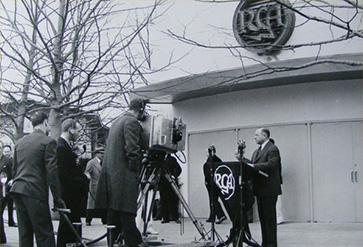
1954
World's first consumer color television
In 1953, RCA's all-electronic color TV technology was adopted as the standard for American television; it is now known as NTSC (after the "National Television System Committee" that approved it). The first RCA consumer color televisions were produced in 1954.
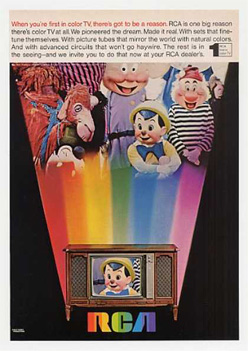
1957
RCA Studios open
In 1957 RCA opened RCA Studios, later known as Studio B, a state-of-the-art recording studio in Nashville, TN. Later in 1964, Studio A Opens.
For over 20 years, top artists, like Elvis Presley, the Everly Brothers, Roy Orbison, Don Gibson, Charley Pride, Jim Reeves, Dolly Parton, and many others, record countless hits for RCA Victor records and other labels.
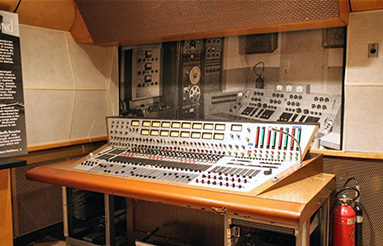
1958
RCA launches first satellite
RCA's first satellite, called SCORE (Signal Communications by Orbiting Relay Equipment), was successfully launched into space, becoming the world's first communications satellite.

1964
RCA and The Ranger 7 satellite
In 1964, the Ranger 7 was successfully launched. RCA was an important subcontractor on the Ranger lunar probes, developing the cameras that would transmit high-resolution photographs of the lunar surface.

1968
The first monochrom RCA camera that went on the moon
RCA High-resolution cameras were selected by the NASA and used successfully for several missions of Apollo lunar landing program: Model RCA Vidicon Monochrom type SSTV (Slow-Scan Television System) for flights : APOLLO 7 (October 1968) and APOLLO 8 (December 1968)
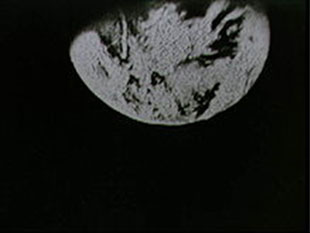
1971-72
First RCA Color television camera on the moon
New RCA Color Television Camera Model : J-series with Field Sequential Color System-- type GCTA (Ground-Commanded Television Assembly) for flights: APOLLO 15 (July -August 1971), APOLLO 16 (April 1972) and APOLLO 17 (December 1972)
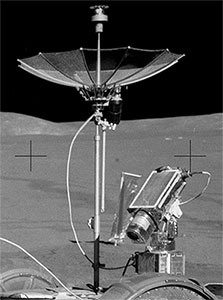
1972
World's first consumer color video
In 1972 RCA successfully demonstrated color video recording on an RCA SelectaVision VideoDisc. By 1977, the RCA VBT200 is the first retail SelectaVision VHS Video Cassette Recorder introduced in the U.S. The Video Cassette Recorder featured a clock, timer, two speeds for recording up to 4 hours, an analog timer with reset, and a memory on/off switch - that's a load of features and options for video cassette recorders of that time!
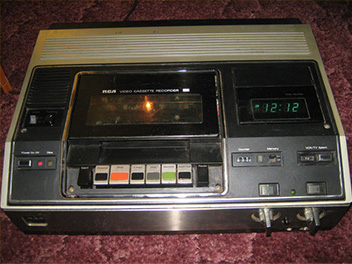
1981
World's first consumer color disc video
In 1981 RCA's long-awaited VideoDisc system, essentially a vinyl record
that plays video, hit stores in the United States. VideoDiscs' big advantage
over videotapes and local cable was superior picture quality and video
selection. In 1983, RCA introduced the J-Line of CED VideoDisc Players,
featuring automatic motorized load of VideoDisc caddies.
1990
Chipper is the new canine partner to Nipper
The RCA dog Nipper was joined by smaller canine companion Chipper, who represented the semi-conductor- based future of digital consumer electronics. The 1990s sees two innovations from RCA: Widescreen TVs and Home Satellite TV Systems:
In 1993, RCA introduced CinemaScreen, the first widescreen TV available in the U.S., featuring a new rectangular 16x9 dimension picture tube, shaped like a movie screen.
A year later, the RCA Digital Satellite System (with programming from DIRECTV and USSB) became the first high-power small-dish satellite system on the market.
1996
RCA offers consumers the first widescreen
TV with no set-top receiver
In 1996 RCA launched a fully-integrated affordable widescreen TV that required no additional set-top receiver to receive and display HD (high definition) images.
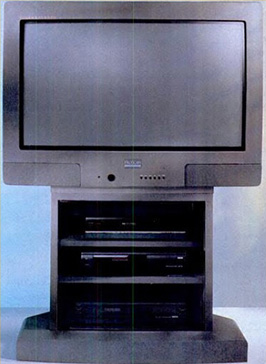
1998
RCA introduces HDTV programming via satellite
In 1998 RCA and DIRECTV demonstrated the first satellite transmission of HDTV program material at the annual Consumer Electronics Show (CES) in Las Vegas. In August, RCA introduced the DCT100 digital receiver that allowed digital and analog signals to be viewed on any set. In November, 1998, Digital broadcasting officially begins.
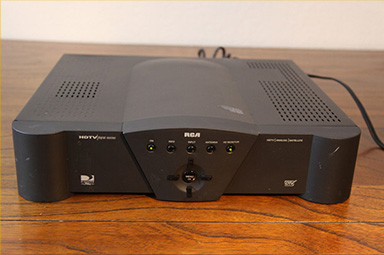
2004
RCA records
In 1986, RCA Records is fully acquired by Bertelsmann, making it part of the
Bertelsmann Music Group (BMG). In 2004, RCA Records becomes part of Sony BMG
Music Entertainment through a merger. By 2008, RCA Records is fully acquired by
Sony Music and becomes the second oldest record label in American history, after
sister label Columbia Records.
2013
RCA debuts tablets and LED lighting products
In 2013, the first RCA branded tablets are introduced in the U.S. and LED lighting products are introduced in the U.S. and Canada. The RCA Mobile TV Tablet combined the worlds of TV viewing and handheld computing offering the electronics industry’s first dual-tuner mobile TV. The RCA Mobile TV Tablet becomes the first tablet device to feature an integrated mobile TV tuner which offers viewers on-the-go access to 130 mobile TV stations.
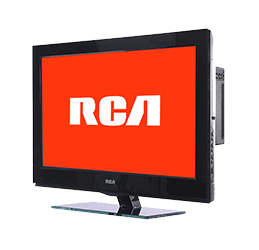
2014
RCA introduces HD LED TVs and smartphones
In 2014, Android Smartphones and Full HD LED Smart TVs are introduced under the RCA brand. The new TV offering included the launch of a dozen new HDTVs that are "Roku-ready" thanks to each model’s pre-installed Roku Streaming Stick. The 12 new models, which featured screen sizes ranging from 28 to 65 inches, offered convenient access to the Roku Channel Store and Roku’s 1,700+ apps.
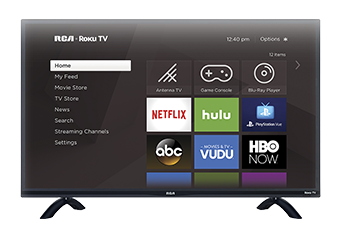
2019
RCA: 100 Years of Magic
On October 17th, we celebrate 100 years of RCA.
Today, the RCA brand symbolizes American ingenuity worldwide. Its iconic name can be found on flat-panel and 4K televisions, tablets, smartphones, home appliances, and many other extraordinary products. From our biggest public moments to the smaller, more personal ones, RCA has been part of our lives and will continue to be today, tomorrow, and for years to come. RCA is in tune with inspiration and innovation for your future needs.
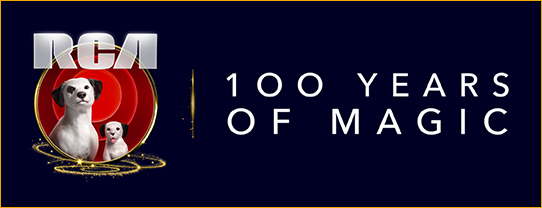
2021
RCA TVs integrate WebOS Smart Platform
WebOS Smart platform delivers streaming simplicity. Featuring the latest streaming apps and the Apple TV app plus popular apps like Netflix, Hulu, Sling, Prime video and more. It is simple to find top shows, up‐and‐comers and get personalized content recommendations.

2023
RCA releases its first Home Automation system
Based on Tuya Smart Life Technology, it has never been so easy to connect and use an Home automation system.

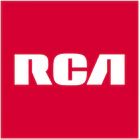




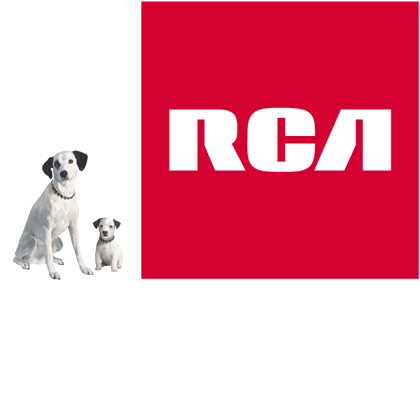
 Canada (English)
Canada (English)  México (Español)
México (Español)  USA (English)
USA (English)  América Central y el Caribe (Español)
América Central y el Caribe (Español)  Argentina (español)
Argentina (español)  Bolivia (español)
Bolivia (español)  Chile (español)
Chile (español)  Colombia (español)
Colombia (español)  Equador (español)
Equador (español)  Deutschland (Deutsch)
Deutschland (Deutsch)  France (Français)
France (Français)  Nederland (Nederlands)
Nederland (Nederlands)  United Kingdom (English)
United Kingdom (English)